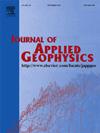An improved inverse scattering imaging condition based on ray-Kirchhoff approximation
IF 2.2
3区 地球科学
Q2 GEOSCIENCES, MULTIDISCIPLINARY
引用次数: 0
Abstract
Reverse time migration (RTM) has superiority over other imaging algorithms in handling steeply dipping structures and other complicated geological models by directly solving the full two-way wave equation. Conventional RTM algorithms aim at generating structural images that indicate the geologic interfaces. Amplitude-preserving and low wavenumber artifacts removal are two important issues that should be addressed for improving imaging quality using RTM. The RTM inverse-scattering imaging condition has been introduced to account for these two key points. The original RTM inverse-scattering imaging condition adopts the ray-Born approximation. The Born approximation assume model perturbations have shot characteristic wavelengths and adopt a volume integral representation to establish the linear relationship between model and data perturbations. In this paper, we extend the concept of RTM inverse-scattering imaging condition by introducing Kirchhoff approximation for linearized forwarding modeling. Since the Kirchhoff approximation requires that model perturbations exist across smooth surfaces, the proposed imaging condition is more suitable for imaging locally planar seismic reflectors instead of superposition of point scatters which implied in Born approximation. Meanwhile, the advanced features of original RTM inverse-scattering imaging condition, i.e., amplitude-preserving and low wavenumber noise removal are well maintained. We verify the effectiveness of the present RTM imaging condition with both synthetic and field data.
基于射线-基尔霍夫近似的改进型反向散射成像条件
本文章由计算机程序翻译,如有差异,请以英文原文为准。
求助全文
约1分钟内获得全文
求助全文
来源期刊

Journal of Applied Geophysics
地学-地球科学综合
CiteScore
3.60
自引率
10.00%
发文量
274
审稿时长
4 months
期刊介绍:
The Journal of Applied Geophysics with its key objective of responding to pertinent and timely needs, places particular emphasis on methodological developments and innovative applications of geophysical techniques for addressing environmental, engineering, and hydrological problems. Related topical research in exploration geophysics and in soil and rock physics is also covered by the Journal of Applied Geophysics.
 求助内容:
求助内容: 应助结果提醒方式:
应助结果提醒方式:


